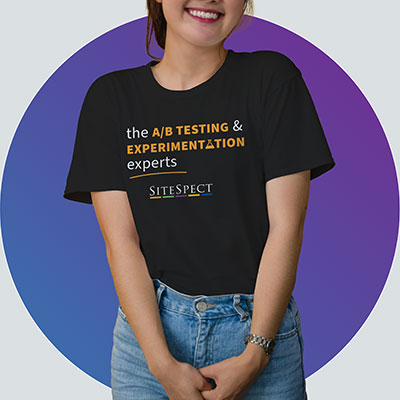5 Steps to Ignite Your Optimization Program
By SiteSpect Marketing
February 11, 2015
Share
Website A/B testing teams often ask us how to scale their optimization programs to deliver more powerful results. Whether creating a new optimization team from the ground up or updating an existing one, you’ve got to base your actions on well-developed strategic plans. These five steps will start a fire under your optimization program:
- Develop an A/B testing framework that is scalable and repeatable
- Organize your team to achieve the best results
- Involve other parts of your organization
- Capture, measure, and record findings
- Learn from A/B tests and make meaningful workflow adjustments
Step 1: Develop an A/B testing framework that is scalable and repeatable.
Start by outlining goals for your people and your process. As shown in the table below, you’ll need clear parameters that describe resources, roles, responsibilities, and goals. Use standardized processes to enhance overall efficiency and provide useful clarity.
| People | Process |
|
|
Source: SiteSpect Professional Services
Step 2: Organize your team to achieve the best results.
In a whitepaper written for SiteSpect, Eric Peterson of Web Analytics Demystified notes that the two most important roles on your Testing Team are the Project Manager and the Executive Sponsor. The Project Manager must be someone who combines incredible organizational skills with a shocking enthusiasm for change. Their role is to ensure that defined A/B testing processes are followed to the letter, increasing the likelihood of successful A/B tests.
The Executive Sponsor’s role is critical because without an internal champion for change on the management team, most A/B testing projects have no spark. Peterson believes there’s a new class of digitally minded executives who are actively signing up to manage A/B testing projects. These soon-to-be “rock-stars” clearly see the opportunity available and want their names associated with the financial gains that A/B testing often produces. They also recognize the value of using A/B testing to prevent mistakes from happening and are just as happy to report saving the company millions of dollars as they are to report incremental revenue.
In addition to the project manager and executive sponsor, consider adding an analytics expert with a statistics background, as well as developers, and a quality assurance expert. If you don’t have the budget to hire all these people, check out Step 3.
Step 3: Involve other parts of your organization.
Is the mission of optimization limited to the optimization team? No. Today optimization is a business issue that other parts of your organization can and should help to address. The optimization team is instrumental in developing programs, but improving the online experience clearly benefits product managers, marketers, and developers.
You can extend your team by negotiating help from analytics or development resources. A collaborative approach ensures that all stakeholders are successful. That leads us to step 4, which helps guarantee that the testing team’s activities and insight are recognized and supported throughout the organization.
Step 4: Capture, measure, and record findings.
Evangelize your team’s efforts by regularly publishing your analytics and success metrics. According to Rich Page, author of Website Optimization an Hour a Day, testing teams should regularly create and distribute reports to ensure that all the members of the company know what your success metrics are and how they perform. When you share these reports you’ll spur discussion and recommendations, which brings us to Step 5.
Step 5: Learn from A/B tests and make meaningful workflow adjustments.
Analysis from your A/B tests helps shape the direction of testing. Evaluate your findings as well as your corrective actions. This improves the process and saves valuable time on future A/B testing. Don’t think of this work as a one-time project; update and revisit your processes often to ensure success.
When you understand and implement these steps, your testing team will begin to streamline its activities and improve your optimization program. For more information, read about SiteSpect’s consulting and training services, and download our whitepaper on Successful Website Testing Practices.
To learn more about SiteSpect, visit our website.
Share
Suggested Posts
Subscribe to our blog:





